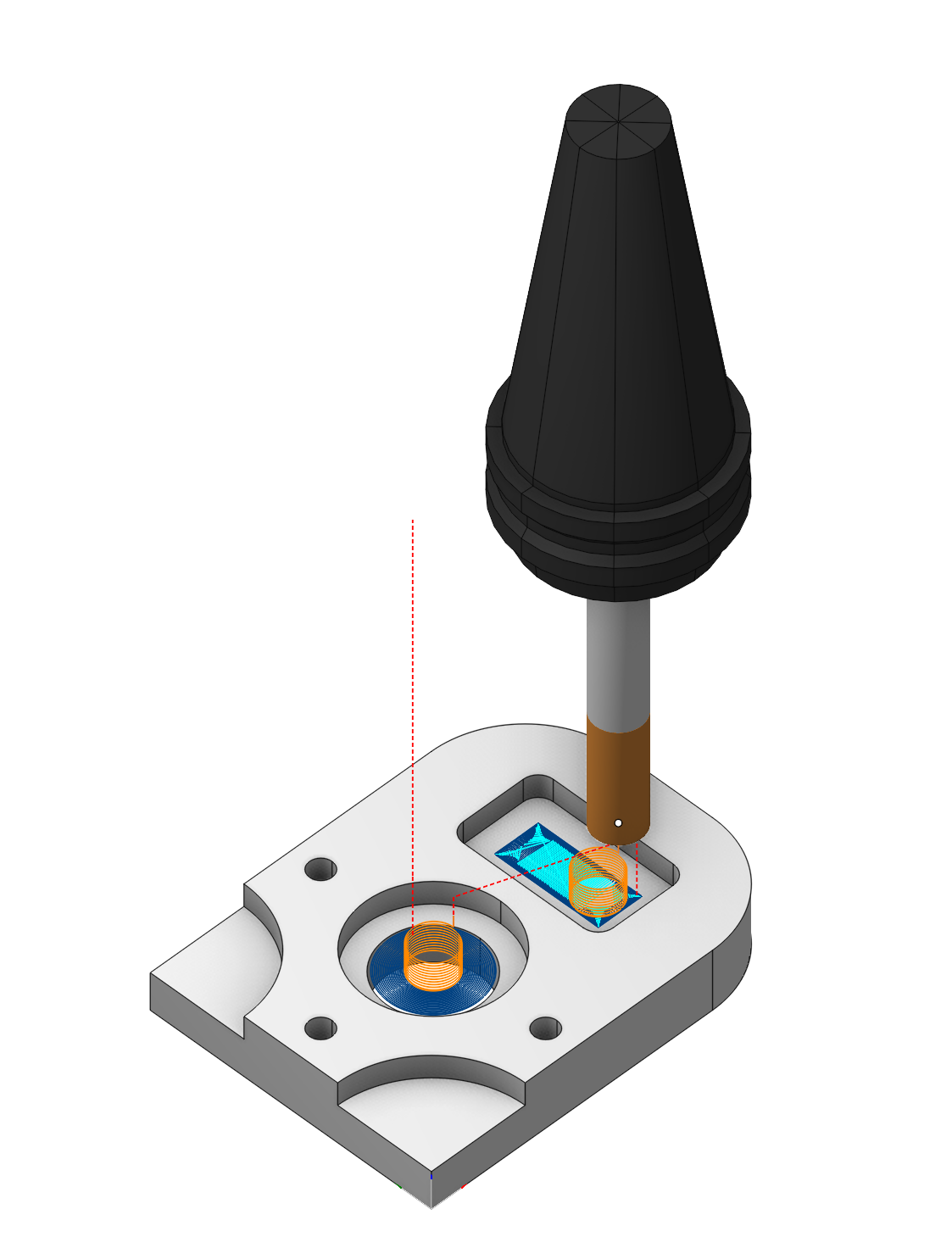Pocketing

Application area:
The pocketing operation is used for 2/2.5D machining of pockets and islands, and also for preliminary material removal before engraving operations. As in the engraving operation , the model being machined is formed from a projection of curves onto the horizontal (XY) plane. The model is created by successive addition of curves or curve groups into the resulting area.
Setup:
The Setup tab is used to configure the primary parameters of the project. This can involve the positioning of the part on the equipment, the coordinate system of the part, and more. See more
Job assignment:
Base surface. This surface serves the purpose of projecting a trajectory onto it. See more
Add Boss. Allows you to add a boss. See more
Add Pocket. Allows you to add a pocket. See more
Add Inversion. Indicates a closed area, inside which the machining rules will be reversed, i.e. machined areas will become unmachined and vice versa. See more
Top Level. Specifying the top level by model elements. See more
Bottom Level. Specifying the bottom level by model elements. See more
Properties. Displays the properties of an element. It is possible to add the stock. You can also call this menu by double clicking on an item in the list.
Delete. Removes an item from the list.
Restrictions. It allows you to restrict areas that should not be machined. See more
Strategy:
Machining strategy:
This parameter allows the user to achieve a toolpath that appears parallel or equidistant or other when performing pocketing operations. This parameter group works similarly to the Waterline roughing operation. See more
Machining levels:
It defines the range along tool axis for the machining. This parameter group works similarly to the Waterline roughing operation. See more
Depth Step:
Material removed in one pass along the tool axis between the Top and Bottom levels.
Milling type:
Сan be assigned in almost all operations, except for the curve machining operations. This allows the user to control the required milling type (climb or conventional) during the toolpath calculation process. This parameter group works similarly to the Waterline roughing operation. See more
Sorting.
Controls the sequence of toolpath passes during the surface machining . This parameter group works similarly to the Waterline roughing operation. See more
Corners smoothing.
When there is a sudden change of the tool direction, the milling control performs deceleration before starting the turn, and then accelerates again. This fact can lead to vibrations and high tool and milling machine wear. The problem can be solved if the toolpath has very few or no breaks. For this reason, in the system there is the toolpath smoothing function using the defined radius for machining inner or outer corners of the model. This parameter group works similarly to the 2D contouring. See more
Tool contact point.
Tool Contact Point (TCP) is a specific location on a cutting tool that defines the primary interaction point between the tool and the workpiece surface or geometric entities during machining operations.
The parameters of this group are the same as in the 5D Surfacing operation . See more.
Transformations.
A dialogue for transforming the toolpath. This parameter group works similarly to the 2D contouring. See more
Links/Leads:
In the Links/Leads tab, you define the parameters for rapid movements. These movements include tool approach from the tool change position, engage to the start of the working stroke, retraction after the final cutting motion, transitions between working passes, and return to the tool change point. You can configure the sequence of movements along the coordinates, the trajectory of these motions, and the magnitude of displacements.
Feeds/Speeds:
Using this dialogue the user can define the spindle rotation speed; the rapid feed value and the feed values for different areas of the toolpath. Spindle rotation speed can be defined as either the rotations per minute or the cutting speed. The defining value will be underlined. The second value will be recalculated relative to the defining value, with regard to the tool diameter. See more
Transformations:
Parameter's kit of operation, which allow to execute converting of coordinates for calculated within operation the trajectory of the tool. See more
Part:
A Part is a group of geometrical elements that defines the space to check for gouges. See more
Workpiece:
A workpiece model of an operation defines the material to be machined. See more
Fixtures:
As the Fixtures the fixing aids such as chucks, grips, clamps, etc., and the restriction areas of any other nature are usually specified. See more